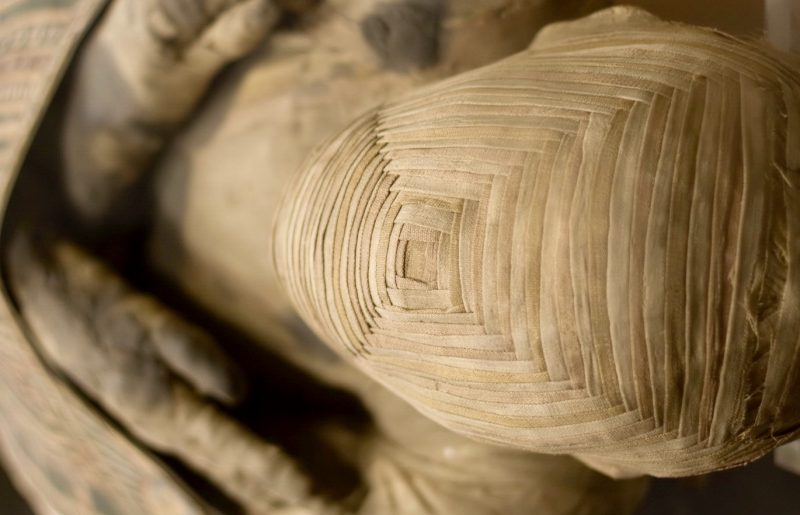There are more than 50,000 pieces that comprise the fantastic collection at the Department of Egyptian Antiquities of the Louvre of Paris. Collectibles include various artifacts from the Nile civilizations that span more than four millennia, from 4,000 BC to the 4th century AD. Counted as one of the world’s largest such collections, it gives a detailed overview of Egyptian life and customs from the earliest days of the Ancient Egypt, through the Middle Kingdom and the New Kingdom, as well as the Ptolemaic, Roman, and Byzantine eras.
The collections accessible at the Louvre originate from the royal collections, and have been continually enriched. Of exceptional importance are the literary and artistic contributions of Dominique Vivant Denon as part of the Institut d’Égypte, commissioned by Napoleon during his Egyptian campaign of 1789 to 1801. Following the expedition, Denon was appointed as the first director of the Louvre Museum and also issued a two-volume book entitled Journey in Lower and Upper Egypt that marked the foundation of modern Egyptology
Ever since it was inaugurated, the collection at the Department of Egyptian Antiquities has followed important discoveries and more purchases of valuable items. Guarded by the Crypt of the Large Sphynx, the entire department consists of 30 rooms, and visitors can see genuine Ancient Egyptian art and pieces of jewelry, musical instruments, clothing, tools, and weapons, or papyrus scrolls, among other items.
Among the many authentic artifacts, there also lies, in its own infinite sleep, a very intricate mummy, perhaps unlike any other mummy seen anywhere.
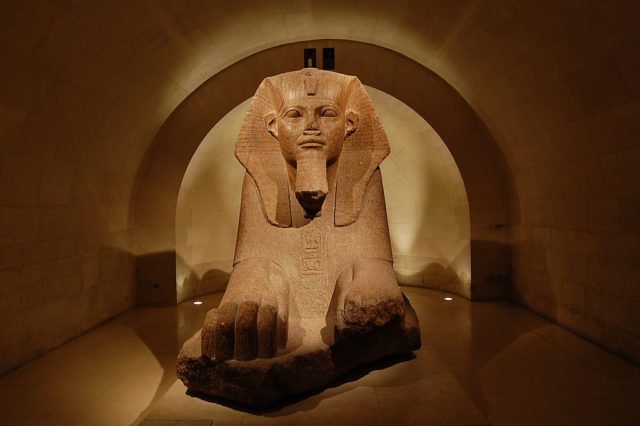
The mummy at the Louvre is particularly striking because of its mesmerizing intricacies of head wrapping. In contrast to the winding wrap that everyone is accustomed seeing, this exhibit has its skull thoroughly encased in strips of linen, with a geometric twisted square pattern that covers the whole face. In addition to the fascinating binding, the cartonnage laid over the rest of the mummy’s body features a neckband draped over the chest, an ornamental apron across the legs, as well as casing found at the feet.
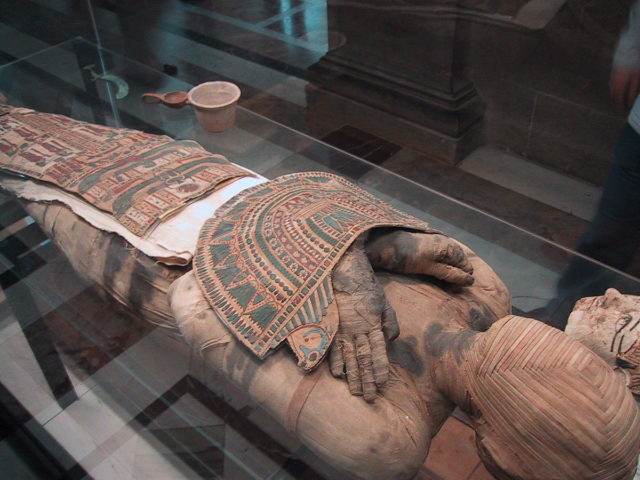
As the museum reports, X-Rays have shown that the mummy was an adult who probably lived during the Ptolemaic Period of Ancient Egypt, that is between 305 BC to 30 BC. The period began with the reign of Alexander the Great’s General Ptolemy and ended with the rule of Cleopatra.
Researchers believe that the mummified person was named either Nenu or Pachery, although this remains uncertain. The very fact that he was preserved implies that, whatever his name, he was considered fortunate throughout his mortal life. Through the ancient funerary process, his survival into eternity was ensured according to the Ancient Egyptian belief system.
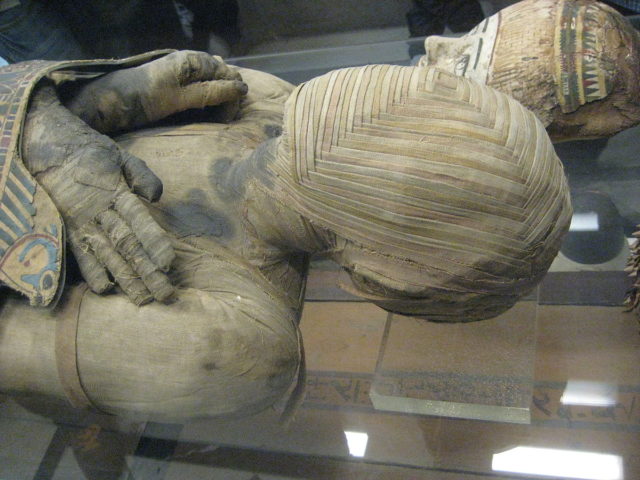
Reportedly, Nenu or Pachery most likely belonged to the upper middle-class. His main organs were preserved in jars, except for the heart and the brain. Through the mummification process, the body was settled in salt in order to dry it out, and after that was covered with resin and aromatic oils before being wrapped in strips of linen cloth.
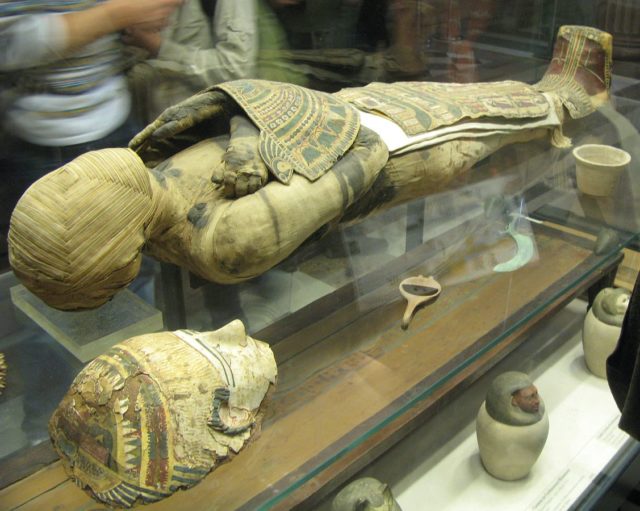
The remarkable neckband portrays sister goddesses Nephthys and Isis, who stand as protectors of the mummy. The organs in the jars are similarly protected by another major Egyptian god, Horus.
One more deity, Anubis or Anpu, god of the cemeteries and embalming, can be observed at the feet. Depicted as a man with a canine head, he is the one who would measure the weight of the heart of the mummified person in order to determine if their soul was allowed passage into the realm of the dead.
At the time this person was mummified, Egypt was perhaps thriving in the golden days of the rise of Alexandria as the new center of knowledge and scholarship in the ancient world. Or it might be that, slowly and steadily, Rome was already preparing to exert a grip over the prosperous fields by the Nile.
